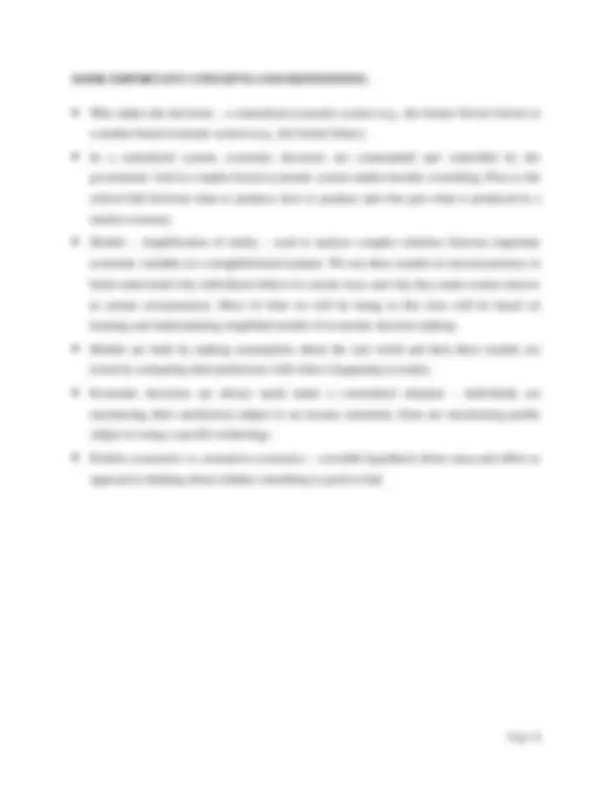



Study with the several resources on Docsity

Earn points by helping other students or get them with a premium plan


Prepare for your exams
Study with the several resources on Docsity

Earn points to download
Earn points by helping other students or get them with a premium plan
Community
Ask the community for help and clear up your study doubts
Discover the best universities in your country according to Docsity users
Free resources
Download our free guides on studying techniques, anxiety management strategies, and thesis advice from Docsity tutors
An introduction to the field of economics, focusing on the concepts of microeconomics and macroeconomics. It also introduces the three fundamental questions of economics: what to produce, how to produce, and who gets what is produced. The document also discusses the differences between centralized and market-based economic systems and the role of models in economics.
Typology: Study notes
1 / 2

This page cannot be seen from the preview
Don't miss anything!


Page | 1
This set of notes covers topics from Chapter 1 of the textbook, pages 1-9. You must read these notes in conjunction with Chapter 1. This chapter provides an introduction to some of the most important concepts and definitions that will be covered in detain in this class.
Every society has scarce resources and we have to use these limited resources to meet different goals. Economics is the study of how to use limited resources efficiently for the achievement of alternative ends.
The three most important questions facing any society are:
producing more guns means producing less butter.
between different production techniques and input combinations, always looking for the cheapest production technology.
less for someone else.
Microeconomics is the study of how an individual decision maker, e.g. an individual consumer or a firm, uses scarce resources to maximize his/her personal benefits. Benefits can be thought of as measured by units of satisfaction for a consumer or dollar profits for a firm. Macroeconomics, on the other hand, is the study of the economy as a whole.
Page | 2
a market based economic system (e.g., the United States).
government. And in a market based economic system market decides everything. Price is the critical link between what to produce, how to produce and who gets what is produced in a market economy.
economic variables in a straightforward manner. We use these models in microeconomics to better understand why individuals behave in certain ways and why they make certain choices in certain circumstances. Most of what we will be doing in this class will be based on learning and understanding simplified models of economic decision making.
tested by comparing their predictions with what is happening in reality.
maximizing their satisfaction subject to an income constraint, firms are maximizing profits subject to using a specific technology.
opposed to thinking about whether something is good or bad.